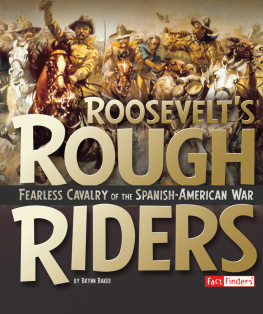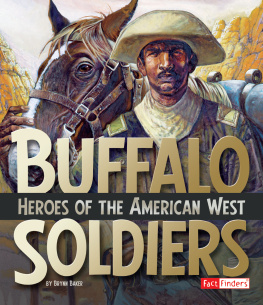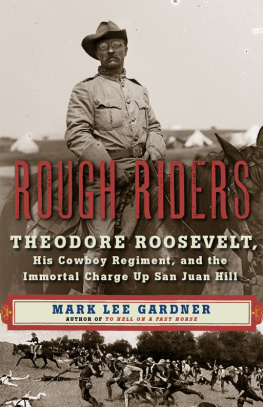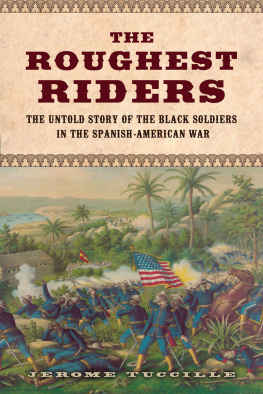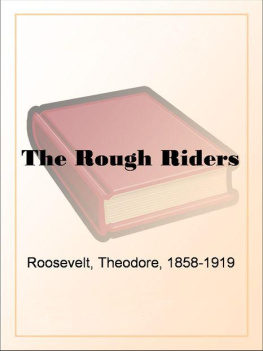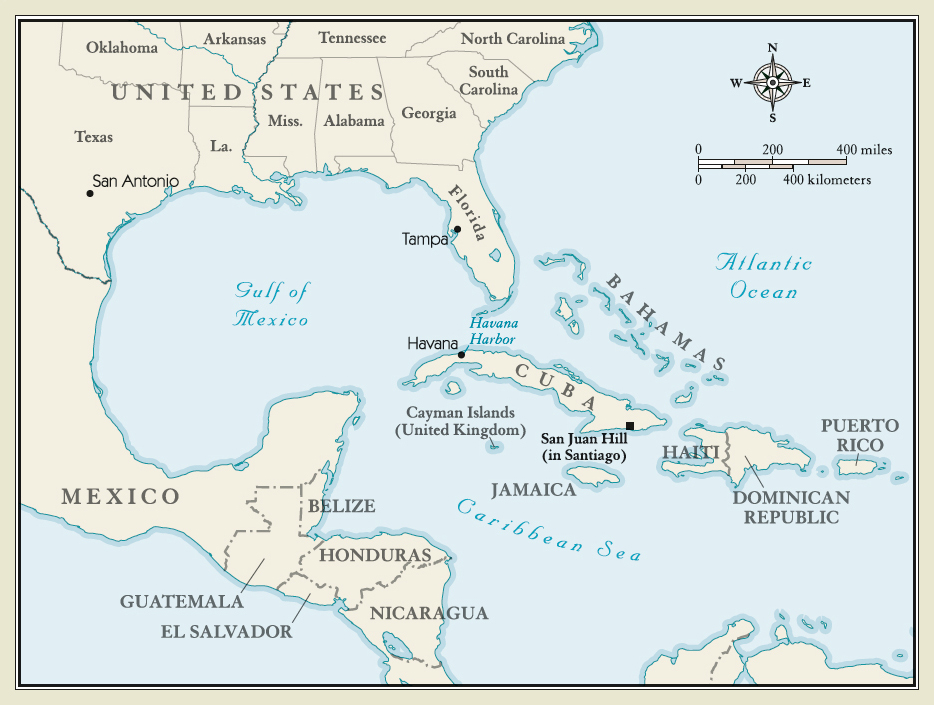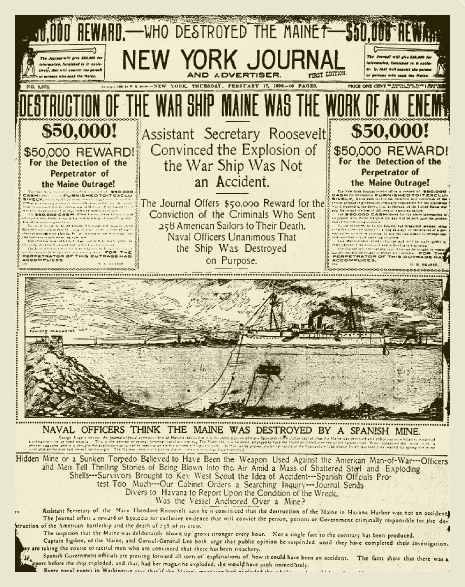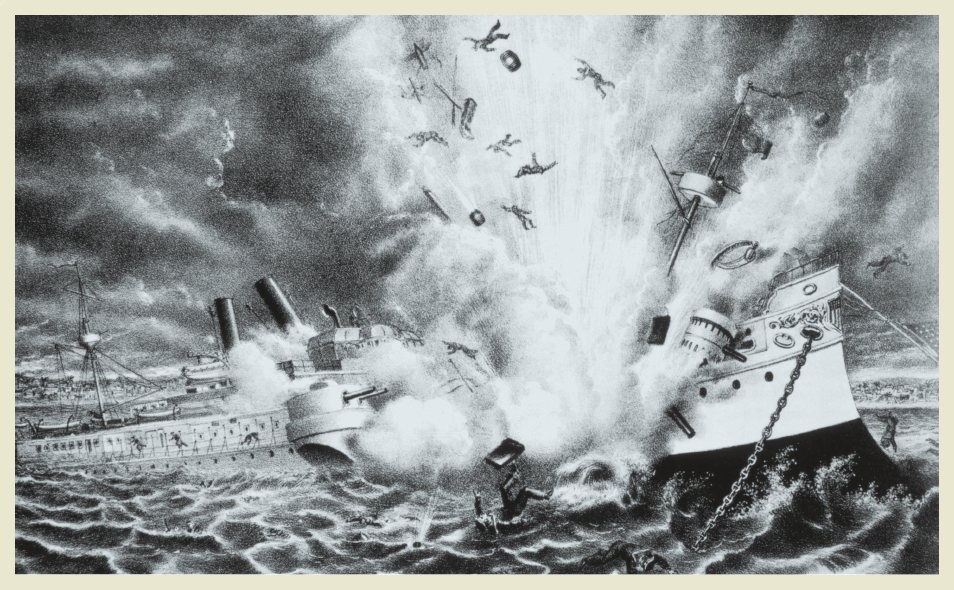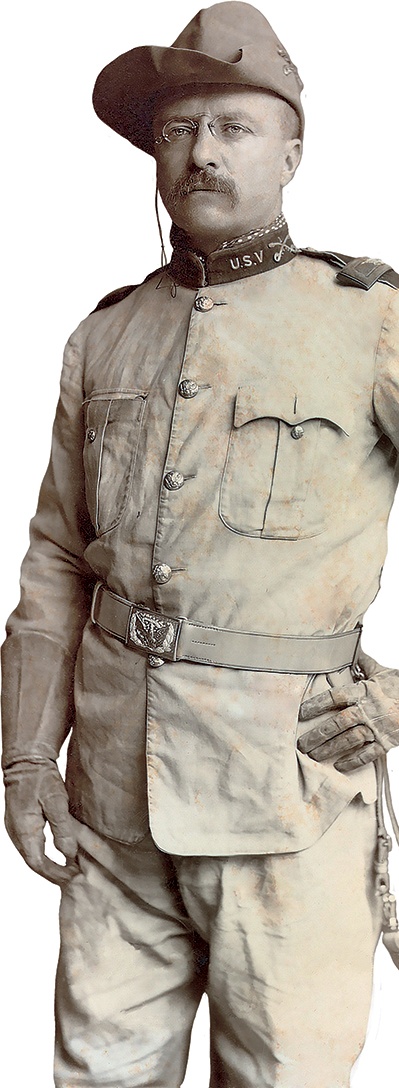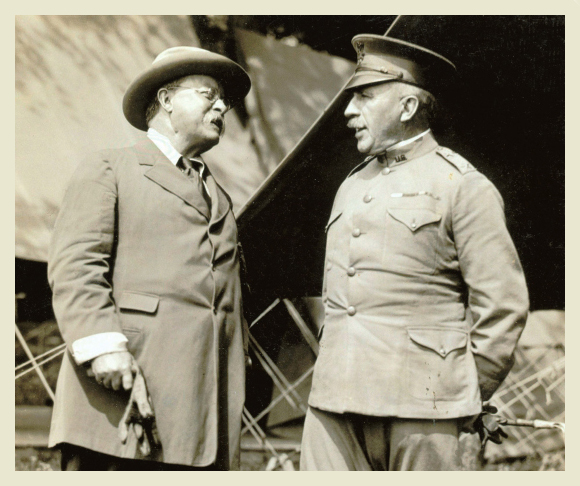TIMELINE
- October 27, 1858: Theodore Roosevelt is born in New York City.
- 1897: Roosevelt is appointed Assistant Secretary of the U.S. Navy.
- February 15, 1898: USS Maine explodes in Havana Harbor.
- April 25, 1898: U.S. Congress declares war on Spain.
- May 1898: The Rough Riders begin training at Camp Wood in Texas.
- June 22, 1898: The Rough Riders arrive in Cuba.
- June 24, 1898: The Rough Riders win their first battle in Las Gusimas, Cuba.
- July 1, 1898: Roosevelt leads the Rough Riders to victory atop Kettle and San Juan Hills.
- July 17, 1898: Spanish troops surrender at Santiago.
- December 10, 1898: The Spanish-American War officially ends when the Treaty of Paris is signed.
- September 14, 1901: Roosevelt becomes the 26th president of the United States.
CRITICAL THINKING USING THE COMMON CORE
- Who were the Rough Riders? What effect did they have on the Spanish-American War? (Integration of Knowledge and Ideas)
- Describe the events that occurred on July 1, 1898, that led to the United States winning the Spanish-American War. (Key Ideas and Details)
- How do the events described in the timeline show how Theodore Roosevelt worked his way to becoming president of the United States? (Craft and Structure)
READ MORE
- Adler, David A.Colonel Theodore Roosevelt. New York: Holiday House, 2014.
- Fitzpatrick, Brad.Theodore Roosevelt. New York: Chelsea House, 2011.
- Hollihan, Kerrie Logan.Theodore Roosevelt for Kids: His Life and Times, 21 Activities. Chicago: Chicago Review Press, 2010.
- Rappaport, Doreen.To Dare Mighty Things: The Life of Theodore Roosevelt. New York: Disney/Hyperion Books, 2013.
CHAPTER 1
SPANISH-AMERICAN WAR
During the late 1800s, the Spanish Empire controlled many islands around the world. Cuba, which is located off the coast of Florida, was the largest of these islands. Many Cubans wanted their freedom and independence from Spain. Cuban rebels had already been fighting the Spanish for more than 20 years. The United States planned to help Cuba free itself from Spanish rule.
Cuba is located very close to the United States. The shortest distance between the two countries is about 90 miles (145 kilometers). During the late 1800s, there were many U.S. citizens living in Cuba.
The United States had more than $50 million invested in Cubas annual sugar trade. However, the U.S. Congress had recently enacted a new sugar tariff. A tariff is a tax placed on certain foreign items that enter a country. This limited the amount of sugar that could be imported into the United States. Americas investment was suffering. The change motivated the United States to fight Spain for Cubas freedom. The United States wanted to buy Cuba once it was free. The sugar produced there would belong to the United States, so it wouldnt be subject to the tariff.
In January 1898 Cubans . On February 15 a huge explosion destroyed the ship and killed 260 of the 400 men on board.
William Randolph Hearst, owner of the New York Journal, offered a $50,000 reward to anyone who could solve the mystery of the USS Maine explosion. Hearsts paper included more than eight pages a day about the explosion for weeks after the event occurred.
In March 1898 investigators for the U.S. Navy ruled that an underwater mine blew up the ship. They never directly blamed Spain, but most Americans did. Tension between the United States and Spain grew quickly.
Congress passed a law on March 9, 1898, granting $50 million to strengthen and expand the U.S. military. On April 25 President William McKinley declared war on Spain. Seventeen thousand American troops were sent to Cuba to fight in the Spanish-American War.
Was It an Accident?
In 1976 a team of American naval investigators concluded that the USS Maine explosion was likely caused by an accidental fire on board the ship.
THEODORE ROOSEVELT
Sitting tall on his horse, Theodore Roosevelt was hard to miss. His father had told him to build his body ever since he was a young boy. Roosevelt obeyed and continually pushed himself to be stronger. He lifted weights, taught himself to box, and did gymnastics.
Roosevelt grew up in New York City and later attended Harvard University from 1876 to 1880. However, after the death of his wife Alice in 1884, Roosevelt moved west to the Dakota Badlands where he bought two ranches and 1,000 cattle. Badlands are areas with little to no plant life and small, steep hills.
Roosevelt led an active lifestyle and liked to take part in outdoor adventures. He rode his horse for days on endherding cattle, hunting grizzly bears, and chasing criminals as a frontier sheriff. His closest friends were ranch hands and cowboys. These ideal days ended when most of Roosevelts cattle died during a long and harsh winter in 1886.
This misfortune prompted Roosevelt to return to New York where he eventually served as United States Civil Service . As commissioner he created a fair hiring system for government workers. He later became the New York City Police Commissioner. Then in 1897 President McKinley appointed Roosevelt Assistant Secretary of the Navy.
One year later the United States needed more men to fight in the war against Spain. It needed at least 75,000 troops to stand a chance against the Spanish in Cuba. At the time the U.S. Army had only 28,000 soldiers. Congress approved the formation of volunteer to help the regular army in battle. At age 40 Roosevelt gave up his job with the navy and volunteered to fight.
Secretary of War Russell Alger offered Roosevelt command of the 1st United States Volunteer Cavalry Regiment. However, Roosevelt had never held such a position and doubted his ability to lead a regiment. Roosevelt suggested his friend, Leonard Wood, for the job instead. Wood was a medical officer and President McKinleys physician.
Theodore Roosevelt (left) and Leonard Wood (right) met in 1897 while Roosevelt was working in Washington, D.C. They became close friends and worked well together. Roosevelt said he learned a lot from Woods military experience.
Roosevelt became second in command of the volunteer regiment. People always recognized him for his proud posture while sitting on his horse. He had a bushy mustache and little, round glasses. Roosevelt wore a slouched hat, a knotted handkerchief around his neck, and leather gloves up to his elbows. His commands were loud and clear. He had a unique voice that his troops recognized and obeyed.

